|
Some of the questions in this course may be answered by recording an audio file. If you chose to record the answer, click on the Add Recording button and follow the on-screen instructions closely. Once you have completed and attached the recording, enter the word “COMPLETE” in the text box. (Note: If your computer does not have a built-in microphone, a microphone or microphone/headset combination is needed to record audio.)
Recording Audio Alert: The latest version of Java must be installed on your computer in order to record audio. If you are having difficulty, please go to: www.java.com and click on " Free Java Download." For Windows users, you will then click on "Agree & Start Free Download." For other operating systems, click on the "All Java Downloads" link to find your specific instructions. You may need to restart (close and re-open) your browser to enable the Java installation in your browser.
Rhombi and Squares
|
|
|
| |
| |
|
| Activity: Follow the steps in the unit link to "Rhombi and Squares" and construct rhombus TUVW. |
|
|
| |
| 2) When constructing the rhombus in the previous activity, how were you able to create the four congruent sides? |
|
4000 character(s) left
Your answer is too long. |
|
|
Attachments |
|
| |
|
| |
|
| Refer to rhombus JKLM below to answer the next two questions. |
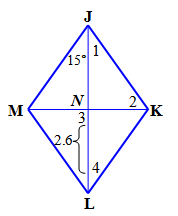 |
|
| |
| 5) Answer the following questions: (a) What is the measure of angle 1? (b) What is the measure of angle 2? (c) What is the measure of angle 3? (d) What is the measure of angle 4? |
|
4000 character(s) left
Your answer is too long. |
|
| |
|
| |
|
| |
|
| |
|
| |
|
| Activity: Use a compass to construct a square. Follow the steps for constructing a rectangle, but adapt the method so that the rectangle is a square. |
|
|
| |
| 10) In the previous construction, how did you adapt the method for constructing a rectangle to construct a square? |
|
4000 character(s) left
Your answer is too long. |
|
|
Attachments |
|
| Refer to the Venn diagram in the unit link to "Rhombi and Squares" to determine if the statements are true or false in the next five problems. |
|
|
| |
| 11) Every rectangle is a parallelogram. |
|
|
|
| |
|
| 12) Every square is a rectangle. |
|
|
|
| |
|
| 13) Every rhombus is a square. |
|
|
|
| |
|
| 14) All squares are rectangles and rhombi. |
|
|
|
| |
|
| 15) All quadrilaterals are parallelograms. |
|
|
|
| |
|
| Copy or print out the table below and fill in the cells with “yes” if the property is true about the figure or “no” if the property is not true about the figure. Use your completed table to solve the next four problems and select the phrase that best completes the sentence. Make sure that you read each choice before making the selection. |
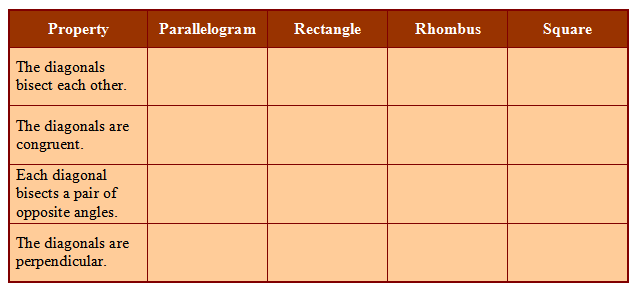 |
|
| |
| 16) The diagonals are perpendicular in _____. |
|
|
|
| |
|
| 17) The diagonals are congruent in _____. |
|
|
|
| |
|
| 18) The diagonals bisect each other in _____. |
|
|
|
| |
|
| 19) Each diagonal bisects a pair of opposite angles in _____. |
|
|
|
| |
|
| 20) Sketch Parallelogram EFGH with vertices E(1, 2), F(3, 8), G(5, 2), and H(3, –4) on graph paper, and then answer the following questions: (a) What is the length of each side of the parallelogram? (b) What is the length of each diagonal? |
|
4000 character(s) left
Your answer is too long. |
|
| |
|
| 21) Which of the following is true about parallelogram EFGH in the previous problem? |
|
|
|
| |
|
| |
| |
|
| 23) Answer the following questions about trapezoid DEFG shown below. (a) Name the two bases. (b) Name the two legs. |
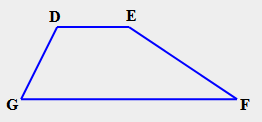 |
4000 character(s) left
Your answer is too long. |
|
| |
|
| Select “True or False” in the next three problems. |
|
|
| |
| 24) The quadrilateral is a trapezoid. |
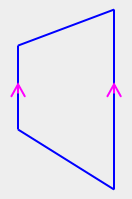 |
|
|
| |
|
| 25) The quadrilateral is a trapezoid. |
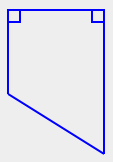 |
|
|
| |
|
| 26) The quadrilateral is a trapezoid. |
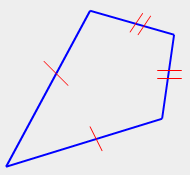 |
|
|
| |
|
| |
|
| |
|
| |
|
| |
|
| Activity: Print out or copy trapezoid TRAP and use a compass and straightedge to construct its median. Refer to the unit link to “Trapezoids” for the steps to construct the median of a trapezoid. |
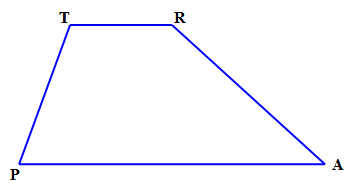 |
|
| |
| |
|
| |
|
| Refer to isosceles trapezoid PQRS with median MN and diagonals PR and QS as shown below to answer the next four questions. |
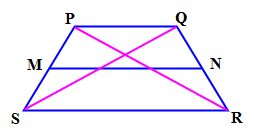 |
|
| |
| |
|
| |
|
| |
|
| |
|
| |
|
| |
| |
|
| |
|
| Refer to the diagram of kite GHJK to answer the next four questions. |
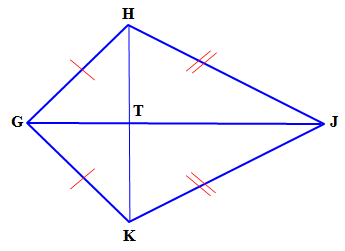 |
|
| |
| 40) True or False? Triangle HJK is an isosceles triangle. |
|
|
|
| |
|
| 41) True or False? Triangle HGK is an equilateral triangle. |
|
|
|
| |
|
| 42) True or False? Diagonal HK is perpendicular to diagonal GJ. |
|
|
|
| |
|
| 43) True or False? Diagonal GJ is congruent to diagonal HK. |
|
|
|
| |
|
| 44) Study the chart shown below. Where does “kite” belong on this chart? |
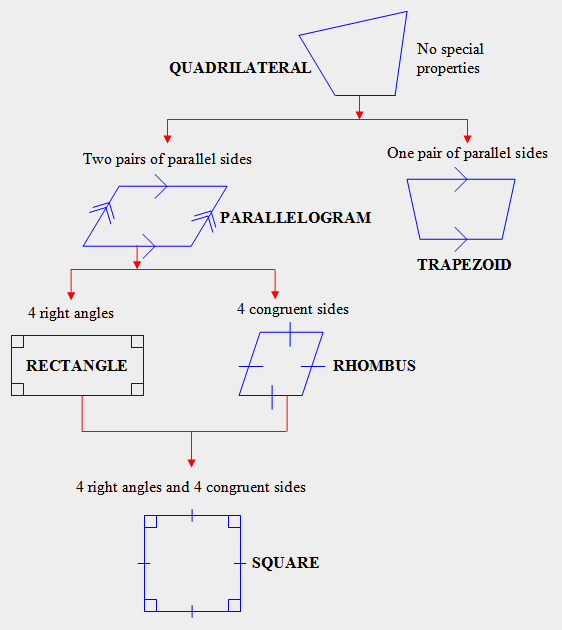 |
4000 character(s) left
Your answer is too long. |
|
|
Attachments |
|
| Extended Research: Check with your instructor to see if he/she is interested in awarding extra credit to you for writing a one-page report on the following research topic: How were trapezoids used in ancient history architecture? Some topics to explore are the construction of the Mayan Pyramids and China’s Great Wall. You may include pictures that you find. Be sure to report all websites or other resources that you referenced to compile your report. |
|
|
| |
| 45) If you were directed by your school to complete Offline Activities for this course, please enter the information on the Log Entry form. |
|
| No offline activities found |
0 Hour(s) & 0 Minute(s)
|
|
|
Attachments |
|